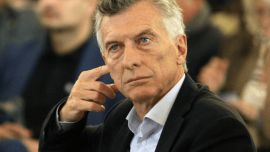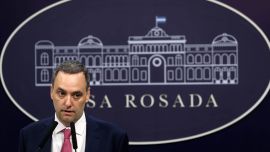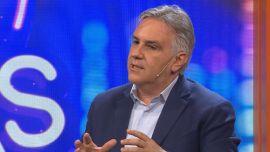Argentina's poverty rate stood at 37.3 percent in the second half of 2021, down 3.3 points compared to the first half of the year, the INDEC national statistics bureau has revealed.
In the case of extreme poverty – individuals and families who are unable to cover basic basket of food expenses – the figure stood at 8.2 percent, a drop of 2.5 percentage points compared to the measurement for the first half of last year.
Experts said the drop was a result of slowing food inflation in recent months, the government’s so-called ‘Plan Platita ‘ that boosted payments to the impoverished in an election year and price controls on essential items.
The improvement in poverty rates also reflects the improvement in Argentina’s economy over the past year. Gross domestic product improved 10.3 percent in 2021, after collapsing 9.9 percent in 2020 amid the Covid-19 pandemic. Prior to last year, the economy had been in recession since 2018.
INDEC’s survey, which does not cover the entire population of around 45 million, is based on the country’s 31 largest urban conglomerates, but it offers a wider picture that can be projected out to the whole country.
According to the bureau, more than half (51.4 percent) of people aged 0-14 are poor, compared to 54.3 percent in the previous semester.
The official number of people below the poverty line identified late 2021 was 10.8 million, of which 2.4 million were considered indigent. Projected out to the entire population, the former reaches more than 16 million people.
INDEC recently reported that Argentina’s unemployment rate fell to seven percent in the final quarter of 2021, the lowest in the last six years, banking a year-on-year decrease of four points. Underemployment – meaning those who do not have enough paid work or have jobs that do not make full use of their skills – stands at 12.1 percent, three points lower than in the same quarter of 2020.
The Economy Ministry reported that in 2021, 920,400 people were lifted out of poverty (the figure reaches 1.5 million projected for the country) compared to the previous semester and 1.2 million compared to the second semester of 2020.
Cause for concern
Reacting to the data, economic research centres and think-tanks said there were multiple reasons for the improved figure, while underlining the surge in poverty over the past five years.
Economic research centres analysed the latest data on poverty in Argentina released by INDEC for 2021. While some highlighted the slight drop in the indices in relation to 2020, others warned that if compared to 2017 it rose by 11.7 percentage points.
For the Centro de Economía Política Argentina (CEPA), the three-point drop in the second half of last year was mainly due to the slowdown in food inflation.
"From May 2021 onwards, a more moderate evolution in food inflation was observed, with values below or close to general inflation," a report from the organisation said.
CEPA indicated that "during the first half of 2021, the average food inflation amounted to four percent, while in the second half it added [up to] 2.9 percent," stressing that "as the price of food determines the levels of the food basket and the total basket, food inflation below general [inflation] explains part of the deceleration of poverty."
The centre, directed by economist Hernan Letcher, also recognised the impact of the so-called ’Plan Platita’ – government-backed improvements to social payments such as the minimum wage that targeted the poor in an election year.
By contrast, the Fundación Libertad y Progreso thank-tank observed that "since the second half of 2017, the number of people living in poverty [in Argentina] rose by 5.8 million."
"As a percentage of the population, if we compare with data from just four years ago, poverty went from affecting 25.7 percent to 37.3 percent – a rise of 11.6 percentage points," says the liberal think tank.
Poverty rose to more than 35 percent during the Mauricio Macri administration following the 2018 currency crisis, according to INDEC. It stood at around 40.9 percent when the Alberto Fernández administration took office, before rising to 42 percent in the second half of 2020 during the coronavirus pandemic.
Most experts expect poverty to rise in the coming year, given the sharp rise in inflation seen in the first two months of this year. Prices rose 50.9 percent in Argentina last year, with most forecasts anticipating a similar figure this year. Private estimates forecast an inflation rate of around 60 percent.
– TIMES/AFP/NA























Comments